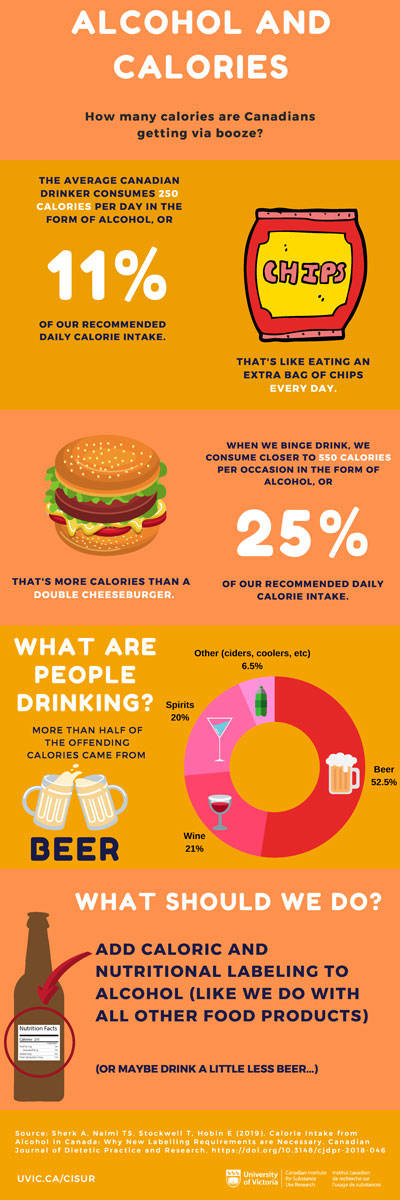The final long weekend of summer is upon us, and for many that means camping, barbecues and some alcoholic beverages. Canadian drinkers may be surprised to hear that there are just as many calories in a few beers as there are in a double cheeseburger.
Adam Sherk, a University of Victoria (UVic) post-doctoral fellow at the university’s Canadian Institute for Substance Use Research, recently completed a study that calculated how many calories are consumed by Canadians via alcohol.
Sherk found that, on average, drinkers ingest 250 calories from alcohol per day. Those 250 calories are about 11 per cent of a person’s daily energy requirements. Sherk explained that it’s the same as eating a bag of chips each day.
“If we look at binge drinking, or having something like four or five drinks on one occasion, it’s actually closer to 550 calories, which is about 25 per cent of the recommended daily caloric intake,” he noted. “That’s the equivalent of a double cheeseburger with all the fixings.”
READ ALSO: Study finds B.C.’s regulation of alcohol is second-best in the country but still far from great
The study also revealed that 52.5 per cent of the calories came from beer, 21 per cent from wine, 20 per cent from spirits and 6.5 per cent from the category that included ciders and coolers.
The findings from the study were published in the Canadian Journal of Dietetic Practice and Research and the paper concludes with a call for alcohol containers to have comprehensive nutritional facts and health risks associated with drinking on the labels. Sherk and his co-authors pointed out that many drinkers aren’t even aware of the caloric intake from alcohol because alcoholic beverage cans and bottles aren’t required to list the nutritional facts.
“Given that the updated Canada Food Guide specifically highlights the importance of cutting back on sugary drinks, including alcohol, we think nutritional labels would be valuable,” says Sherk. “Labels could also be used to communicate information about alcohol’s other health risks, including cancer, stroke and heart disease, or details about Canada’s Low Risk Drinking Guidelines.”
An info-graphic created to accompany the paper noted the author’s suggestion to add the nutrition facts to alcohol containers and jokingly added in brackets that the other option is for Canadians to “maybe drink a little less beer…”
@devonscarlett
devon.bidal@saanichnews.com
Like us on Facebook and follow us on Twitter.

